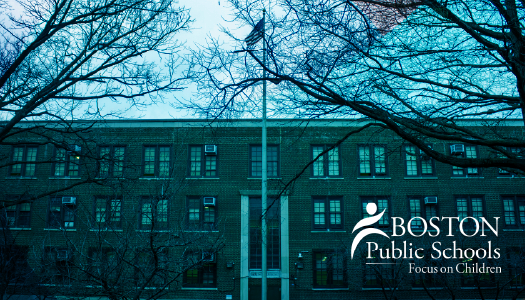Boost School Operations and Save Money: 10 Strategies
As the cost of education continues to increase, those tasked with paying for educational costs have continued to feel the strain. Cutting costs without hurting the quality of the educational services may feel impossible given the importance of providing the best possible educational experience for students.
But there are areas where schools and districts can improve efficiency in spending and take steps to reduce costs and maximize the effectiveness of each dollar spent without sacrificing the quality of education. Of course, developing creative money-saving ideas in budgeting and teaching methodologies can save some cash, but they can only extend so far.

How can schools save money?
Money-saving strategies go hand-in-hand with schools just as much as pencils, blackboards, and desks. There are any number of areas where school funding can be wasted, and it takes organization and discipline to help school districts save money. Energy costs, supplies, facility maintenance, transportation, food service, and employee salaries are just a few areas where schools must devote a constant flow of cash.
Learning where and how schools can save money is a good first step, but implementing cost-saving measures can be a major challenge. School operations teams struggle across the board. Equipping your organization with the right mindset, tools, and resources to enact a savings plan is often the difference between a successful, optimized savings plan and a frustrating experience.
These 10 strategies for cutting costs allow you to ensure your school budget is under control and costs are kept low without sacrificing your school operations quality.
1. Understand your school budget
Budgetary concerns are top of mind for most schools, even those that are well-funded. For those that aren’t, it can seem virtually impossible to make any cuts without sacrificing quality. It is essential to have a clear picture of income, investments, and all other costs before making any major operating decisions.
Understanding where your money comes from, and where it goes, is certainly key to managing your budget. Just picking apart departments or slashing line items is a recipe for disaster, but nitpicking each expenditure can be a poor use of time and effort and hurt morale.
Having a leadership team that has a good grasp of budgetary constraints–and where cuts just cannot be made–is job one. CMMS systems like Brightly Predictor gives you a platform to manage capital budgeting. You can manage funding scenarios and compare their impact to organizational assets and infrastructure health ad justify school funding requests to show its worth to the school. Predictor is a vital tool that helps ensure your school really understands how money flows in and out, and is a sound investment that pays off several times over.
2. Automate where possible
It might sound a bit too futuristic for some schools, but automating certain processes allows schools to better allocate resources and is very manageable for most districts. Asset management software for schools can help automate manual tasks related to maintenance scheduling, event planning, and utility billing, taking them off your plate.
Having an education management software platform can make things like attendance tracking, fee collection and management, course scheduling, and many other tasks automated, which means employees can devote their time and energy elsewhere. By automating these tasks, schools can reduce unnecessary costs and give staff more time to focus on student success.
The CMMS platform then can generate analytical reports to identify other areas of improvement and further reduce record-keeping.
3. Reduce paper usage
Going paperless represents a significant cost saving for schools. Did you know that on average schools spend $100 a day and $16,000 per year on paper alone? Many schools are shifting to device-based learning, or moving tasks to the cloud and using school management software, which allows them to go virtually paperless.
This isn’t just an eco-friendly move, or a way to expand your ESG (though this is certainly another benefit of going paperless). It also is a direct cost-savings move, and not an insignificant one by dramatically reducing paper expenses.
4. Shift to preventive maintenance
Having a reactive approach to maintenance is a costly one. Ironically, many people cite the expense of performing preventive maintenance as a reason to not perform maintenance tasks. But the truth is shifting away from a reactive approach, where an organization performs maintenance tasks when something breaks or is close to doing so, to a proactive approach, where maintenance is performed on a schedule designed to prevent breakdowns, leads to a significant reduction in costs over time.
Preventive maintenance extends the life of equipment and facilities, meaning you get more use from assets. Having a preventive maintenance program saves schools money in the long run and keeps your facility running smoothly and eliminates unnecessary learning disruptions.
Having to replace large-ticket items less often is significantly cheaper than merely reacting when they fail, even with the short-term addition of maintenance costs, when you consider costs associated with early replacement, emergency repairs, and lost work from downtime while waiting for more frequent repairs.
5. Rent out facility space
In an effort to produce revenue from school buildings, some districts and facilities managers have taken to renting or leasing out space for events or organizations. While mixing public and private property interests can be tricky, those who are able to circumvent those potential difficulties (or for whom they’re not an issue), it does potentially constitute a revenue stream.
In fact, the Verona, Wisconsin-based Verona Area School District earned about $140,000 in gross revenue from facility rentals in a single year, navigating logistical challenges such as custodial needs using Brightly’s event management software. The platform simplified the facility rental process and maximized returns, creating a positive community experience.
6. Outsource when needed
In some situations, outsourcing non-educational functions such as food, custodial, transportation, and IT services may be cheaper than hiring and training employees. When using a company that specializes in one or more of these areas, you can create efficiencies (i.e., you’re devoting money but not employee efforts to completing these tasks), and you may improve quality without increasing costs.
For example, IT services require certain resources and expertise. Hiring employees to handle these jobs could require a lot of front-end expenses not only for employees, but for software programs, subscriptions, and training costs. An external company, which may already have many of those resources and qualified employees on staff, may be able to perform that work better, more efficiently, and at a lower cost than you would pay hiring, training, and maintaining new employees.
7. Eliminate energy waste
Energy efficiency is a great way for schools to reduce costs while contributing to more sustainable operations. The U.S. Environmental Protection Agency estimates that 25% of energy use in schools is wasted. Energy-saving strategies, like ensuring lights, electronics, and other energy-draining devices are turned off overnight, and that items like fans and bulbs are energy efficient, can have a major effect on energy spending. Having thermostats set for energy efficiency is another way to lower energy usage and costs.
The Des Moines (Iowa) Public School system saw a 31% reduction in energy use over a decade, saving the district $20 million by increasing energy efficiency. The first step in managing energy efficiency is using an energy management tool that identifies and eliminates waste and assists in establishing and maintaining energy-efficient practices.
8. Optimize transportation
There are significant cost savings to be found through transportation. Maybe your district can’t afford a brand-new fleet of state-of-the-art all-electric buses, but smaller steps like preventive maintenance will extend the lifespan of your fleet.
Other steps, like using GPS routing software to determine the most efficient routes can minimize time spent on the road, reducing fuel consumption and wear and tear on buses. School bus scheduling software can help plan routes and ensure students arrive at school on time each day in the most efficient way possible.
9. Use an inventory management system
An ineffective inventory management system can be a major cost driver. Under- or overstocking parts can lead to unexpected new costs, and inefficiencies, increasing carrying costs, physical storage space, and wasted materials. If you don’t stock enough supplies, you may be left waiting on parts or items you need now. An up-to-date inventory management system helps schools save money by ensuring all the necessary supplies and equipment are in the right place at the right time, when you need to reorder, and when you have plenty.
10. Partner with Brightly
Brightly is a strategic educational institution partner for any public k-12, private/independent, or higher education organizations. Their team of industry experts know how to work with schools to cut costs, optimize operations, and most importantly, improve the student experience.
Contact a Brightly expert to see which of their world-class software solutions fits your school’s needs.



